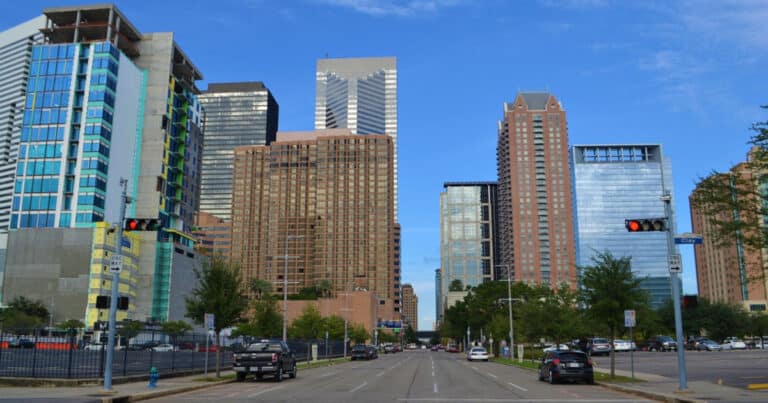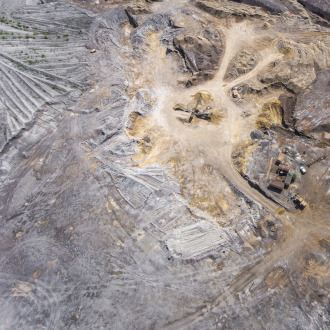By Ethan Keller – In the USA in the 1980s a new term was developed to represent the movement of environmental justice. Environmental racism is a concept in the environmental justice movement. The term is used to describe injustice that occurs within a racialized context. In the U.S. environmental racism criticizes inequalities between urban and exurban areas after white flight. Internationally, environmental racism can refer to the effects of the global waste trade, like the negative health impact of the export of electronic waste to China from developed countries.
Environmental Justice
The environmental Justice movement has broadened the scope of environment beyond conservation and preservation of natural resources. The movement promotes environmental, economic and social justice by recognizing the link between economic, environmental and health issues and demanding a safe, clean community and workplace environment.
Environmental Justice is realized when all people can realize their highest potential, without interruption by environmental racism or inequity. It is supported by decent paying and secure jobs; quality schools and recreation; decent housing and adequate health care; democratic decision-making; and finally, personal empowerment.
History of Environmental Racism
Two stalwarts of the environmental justice movement are Dr. Robert Bullard and Reverend Benjamin Chavis, and both helped create the movement because of injustices in their own communities.
In 1979, a solid-waste site was going to be placed in a majority-Black community in Houston, Texas. Residents were frustrated and didn’t know why their home was chosen over others. Bullard looked at the data and found that in Houston, solid-waste facilities were disproportionately placed in communities of color. They fought, won, and the facility was built somewhere else.
Three years later in 1982, the residents of Afton, North Carolina, a rural majority-Black town, were in a similar situation. 6,000 truckloads of soil contaminated with PCBs, a toxic chemical used in specialized equipment, were going to be unloaded into a landfill in their small town. Furious, the residents protested the dumping of this hazardous waste with lie-ins and marches. Unfortunately, they were not successful and the soil was dumped.
However, with what happened in Warren County, N.C. capturing the attention of the nation, the event was the spark that inspired people to get involved with the environmental justice movement. As a protestor in Afton, Rev. Chavis, who was also active in the civil rights movement of the 1960s, knew this was a nationwide problem.
In 1987, Chavis lead an organization called the Commission for Racial Justice (CRJ) that published a study titled “Toxic Wastes and Race in the United States”. In it, researchers found that not only was race the single most important factor in determining where hazardous waste sites would be placed, but that this was the result of policy from all levels of government. Bullard came out with a similar study in 1990 titled “Dumping in Dixie: Race, Class, and Environmental Quality”.
Research on Environmental Racism and Justice
Recognizing both the importance of acknowledging environmental racism and the work that both Chavis and Bullard had done, President-Elect Bill Clinton appointed the two to his Natural Resources transition team. There, they worked on Clinton’s environmental policy and focused on the importance of environmental justice, in an effort to raise awareness.
Then in 1994, Pres. Clinton signed Executive Order 12898, titled “Federal Actions to Address Environmental Justice in Minority Populations and Low-Income Populations”. The purpose of this E.O. was to direct federal government agencies (mainly the E.P.A., but also H.H.S. and H.U.D.) toward conducting research in factories that contribute to air pollution and hazardous waste, and the effect it has on the health of the people of color they are built near, as well as “develop interagency model projects on environmental justice that evidence cooperation among Federal agencies”. As well as research, environmental laws are necessary for environmental protection for communities of color.
More recently, in 2018, E.P.A. scientists found that Americans, that are people of color or native indigenous populations, are more impacted by toxic air pollution than white individuals, including those who are impoverished. According to the study, Black Americans are 1.5 times as likely to breath air pollution with Hispanics 1.2 times as likely than white Americans are. Over 20 years after Clinton’s E.O., there are still disparities.
A landmark 2007 study by academic Dr. Robert Bullard – the ‘father of environmental justice’ – found race to be more important than socioeconomic status in predicting the location of the nation’s commercial hazardous waste facilities. Even black communities making $50-60,000 a year were more likely to live in polluted areas than their poor white counterparts making $10,000.
In the UK, a government report found that Black British children are exposed to up to 30% more air pollution than white children. Clean air, that assures quality of life and environmental health, are clearly related to power and poverty.
Examples of Environmental Racism
An example of environmental racism is the neighborhood of Bayview-Hunters Point, in San Francisco, California. The neighborhood residents are almost entirely low-income, people of color, and primarily African-American. Between 1945-1974, this land was used as a Naval Radiological Defense Laboratory (NRDL) shipyard, one of California’s many hazardous waste sites, though the only one in San Francisco. The NRDL activities resulted in long term pollution of the soil, dust, air, and water in the area that had become contaminated with toxic waste chemicals and radioactive material.
Exposure to these chemicals has resulted in many health problems among the residents. Very little has been done by the local or federal government to clean the area of the remaining toxic waste, and, given the neighborhood’s demographics, the neglect of the neighborhood is an example of environmental racism.
Another example is that of the city of Flint, Michigan. The city’s population has a majority of African-Americans, with an incredibly high poverty rate of almost 38%. In 2011, Michigan Governor Rick Snyder unofficially elected an emergency manager to help budget and cut the economic costs of the city. In 2013, the city’s water source was switched from treated water to the Flint River water, despite the river’s history of being treated as an unofficial waste disposal site from the surrounding industrial businesses. The “river water was highly corrosive,” and Flint officials did not treat it, which led to the degradation of the piping of old homes, and further environmental pollution of the water with lead particles.
As a result of this, many children and adults in Flint have health problems from lead poisoning. Again, this is an example of environmental racism because of the neglect of Flint’s public health by officials, and the environmental hazards that the low-income communities of color were, and still are, exposed to. Environmental hazards disproportionately affect low-income communities of color.
The Impact of Environmental Racism
Environmental racism, and environmental justice as a whole, aren’t just abstract concepts from the past. In fact, they are active players in the lives of people in the present day, and sadly will continue into the long term.
The COVID-19 pandemic swept the world in February-March of 2020 and is still ongoing. Those who are immunocompromised are among the most impacted, because their immune systems are weaker and wouldn’t be able to fight off the virus as well.
Those who have lived their lives near an air-polluting factory, or a hazardous waste site, have long-term health complications. Long exposure to air pollutants can cause asthma. Chlorine, a byproduct of some factories, can cause heart disease over time. Both of these conditions can cause individuals to become immunocompromised, thus changing how they have to live their life during an already difficult time.
What Comes Next for Environmental Justice
It can be disheartening to see that over 40 years since Robert Bullard saved that Houston neighborhood from a waste site being constructed that environmental racism is still a problem that communities of color across the country still face.
However, groups like the NRDC and the Sierra Club, as well as scientists at the E.P.A., have not stopped fighting for people of color. Hard work by these groups, with the help of the federal government, can work to undo the policies and regulations that partially caused this problem in the first place.
Additionally, activism in these communities and on social media can help raise awareness that environmental racism and disparities in environmental issues are disproportionately focused in neighborhoods of Americans who are people of color and this is a problem that still needs to be dealt with.
A Biblical Reflection on Environmental Justice
As Rabbi Avi Neuman cites in “Eco Bible”: Eco Bible, Volume 1: An Ecological Commentary on Genesis and Exodus
Genesis 28:21 states: ‘And I return in peace to my father’s house, then God will be a God to me.’ It was necessary for Jacob to leave the comforts of home and society in order to gestate, transform, and become. It then became necessary for him to reenter society and bring that which is holy into all that is profane. That is a labor that can only be accomplished through bringing awareness to action.
Jacob is perhaps the first spiritual social activist. Jacob teaches us that environmental or any other social action is rooted in the recognition that our lives can manifest the world as it should be, rather than accepting what it is or appears to be. A truly “religious” ecology must recognize spiritual orientation, or reorientation, as the starting point for meaningful, practical action.
Following his encounter, Jacob doesn’t withdraw into meditative prayer and ecstatic communion with the Divine. Alive with a new purpose, he “lifted his feet” and stepped forward to struggle with the realities of sustenance, family, social living and justice. Sforno tells us that when a person travels to a place with purpose, it drives him to lift his feet.
* Featured image source








